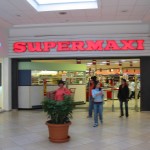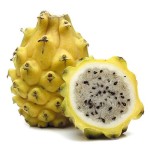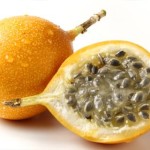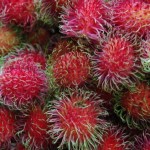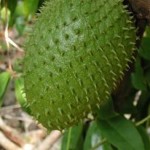Laura Lee Jones is a single mom living in Loja and a wonderful friend. She wrote this fabulous article on shopping here and with her permission, I am sharing it.
When sitting at home in the US researching living in Ecuador, I saw lots of pictures of the colorful displays of fruit sold in the open markets. I knew that would be fun to shop there, but what about grocery stores? What is the shopping experience in the supermarkets like–especially when you’re a new arrival?
Well, I remember walking up and down the aisles thinking, “I don’t know what most of this stuff is! How am I to fix meals for my kids?” And all the labels, naturally, were in Spanish.
At first, it was hard. We had a lot of repetitious meals of things we recognized. However, over time you learn to adjust and come up with new menu ideas based on what’s available. But for those of you who’ve never been here, the following is a list of some of the differences between North American grocery stores and Ecuadorian. This is not intended as a criticism in any way. Simply a heads up as to the differences because that is what is most interesting when you’re researching a new place. wink emoticon
1. Both in the open markets and the grocery stores, there is a very large variety of fresh fruits. Some of them we tried at first we found to be, I must confess, repulsive…only to discover the Ecuadorians don’t EAT them, they juice them! So, there’s a bit of a learning curve there as well.
2. There is a smaller variety of vegetables to choose from but all of your standards are there, save for sweet potatoes and yams. There is, however, yuca.
3. The large grocery store chains do have a frozen foods section, but much smaller than what you’re used to in North America. It’s actually quite small. With the great variety of fresh foods available, things just aren’t frozen. So far, I’ve never seen frozen juice. Fresh orange juice is insanely expensive but with all the fresh fruit you can always make your own.
4. Milk is super pasteurized so none of it is kept refrigerated. It’s sold on the shelves in card board cartons or foil lined paper packages. The cartons/packages are sold in 1-litre sizes. The 1-litre milk cartons are currently about $1.20 and the packages are around a bit less.
5. Yogurt is runny! You drink it! LOL The flavors available are strawberry, peach, vanilla, mora (a kind of berry), and guanabana. A 1-liter plastic baggie of yogurt runs about $1.30, if I remember correctly. Purchasing it in plastic containers that are easier to pour from costs $3 to $4.
6. In the dairy section, the cheeses available are ricotta, a lot of mozzarella and even more queso fresca, which is an un-aged cheese. To find the aged cheeses (cheddar, colby-jack, pepper cheese, and a really delicious herb cheese) look in the deli section next to the meats. So far, I have not found cottage cheese anywhere.
7. Cookies and crackers do not come in one big package. Rather, they come in packages that contain individually wrapped serving sizes. For example, a package of Oreos has lots of little 4-Oreo packages inside. Sadly, Mint Oreos have not made it to Ecuador yet. Cookie packages run in the $3.00-$3.50 range, more or less, depending on what kind you get. The wafer cookies sell for something like .99 cents per package.
8. There are a FEW pre-made salad dressings in the condiments aisle. Frankly, I still miss North American salad dressings. Here, they sell Ranch, Italian, a balsamic vinaigrette and a honey-type kind of dressing. That is about it.
9. Jams and Jellies – as with most prepared foods, they have it, just not as great of a variety. The jams available are: Strawberry (Frutilla); Peach (Duranzo); Mixed Berry (Fruti-mora); Orange marmalade (Naranja); Guava; and, Pineapple (Piña). That’s pretty much it. Peach is the most expensive at $3.00 a pint jar. The other varieties can be purchased in pouches for .99 cents to $1.10 per pouch. A 1-pint jar of peanut butter goes for almost $10. My kids are big peanut butter fans, so I buy ours at the mercados for $1.80/libra. There is something that kinda/sorta passes for imitation maple syrup as well as an imported brand of imitation maple syrup from the US that is quite a bit more expensive because it’s imported. None of the real thing from Canada, though. Sorry! Corn syrup is quite expensive at $4.00 for a small bottle, but they also sell pouches of sugar cane syrup that can be used in lieu of corn syrup and are much less expensive.
10. Chocolate chips are flat chocolate discs. A 500 gram (2 cup) package of chocolate discs runs around $3.40.
11. A package of 20 garbage bags to fill a large kitchen garbage can runs anywhere from $1.00 to $3.25, depending upon the brand you choose.
12. Fruit pulp. Ecuadorians are experts at making fruit smoothies. In addition to the whole fruits you can buy, they also sell a lot of fresh fruit pulp in the produce section. You can also buy it in the frozen foods section.
13. Like milk, eggs are not refrigerated. It is actually against the law in most countries to wash eggs before they are sold due to how porous the shells are. A washed egg lets bacteria in more easily. Since the US washes their eggs, they HAVE to be refrigerated or they’d go bad. Eggs in Ecuador are not washed, therefore they don’t need to be refrigerated. A dozen eggs goes for a bit over $2.00 a dozen. They also sell really cute little eggs of some other kind of bird. They look like Godiva chocolate eggs! It’s a delicacy. You can also buy them hard boiled from street vendors. (Quail Eggs – edited by Patrice)
14. Meat? Sorry. I’m a life-long vegetarian so I don’t know anything about it. If anyone is already here and wants to comment below, feel free!
15. Dish soap. You can buy liquid dish soap here, but the majority of it is sold as a solid in round plastic containers. It took us awhile to get used to washing our dishes this way, but now I wouldn’t go back. It works great! You use a sponge, get it all sudsy, wash your dishes and then rinse. It even works in cold water. So instead of washing in hot soapy water with a dishrag, you don’t have to have a sink full of water. You just use a sponge with the solid stuff and gets them even cleaner. I LOVE the dish soap here!
16. The only extracts I’ve found available here are mint, coconut, strawberry, rose, and vanilla, so I’ve learned to make my own favorites. That said, they more than make up for it in some of the spice mixes available. They may not have your favorite spice mix that you are used to, but they do have others that are equally delicious.
17. The least expensive bread goes for $1.25 a loaf. The specialty breads go for about $3.50. Then, there are the artisan breads sold in the bakery section (not to mention all the little bakeries scattered around that smell heavenly when you’re walking down the street!)
18. Cinnamon is “canela” and yes, they do have nutmeg. You just have to know the name is “nuez moscado.”
The main difference here is simply not as great a variety in prepared foods. You adjust as you learn what’s available and what’s not and the HUGE variety of delicious tropical fruits available year round more than make up the difference.
If you have a contact in Ecuador, don’t be afraid to ask them to go with you on your first grocery run and explain what the things are. If I’d had that, it would have made it a lot easier!
- Supermaxi is one of the large grocery store chains in Ecuador.
- Pitihaya is a fruit that grows on cacti. It is sweet, mild, juicy and delicious!! You peel the outer skin off and eat the inside. Depending upon the size and the time of year, they can sell anywhere from .50 cents a piece to $1.50 a piece. Expensive but so delicious!
- My kids call these “Perfumed Frog Eggs” because they’re rather slimy. They are very sweet and juicy, however. They are called granadilla. The outer shell is crisp and you break it like an egg shell. There is an inner spongy linning and then a little pouch of slimy seeds that you eat. The slime is about the consistency of egg whites. It sounds gross and some people don’t like it. Personally, I love it. It is so sweet and refreshing. The seeds are crunchy, not hard and you just eat them, too.
- My kids call these “hairy strawberries.” They’re actually lychee! You peel off the outer layer to get to the VERY sweet, white, tender flesh inside. If anyone knows how to get the large pit out so you can actually eat the fruit rather than just suck on it, I’m all ears.
- Guanabana AKA “soursop” in English. People typically have a love/hate relationship with guanabana. Personally, I really dislike it, although in the yogurt, it was good.

